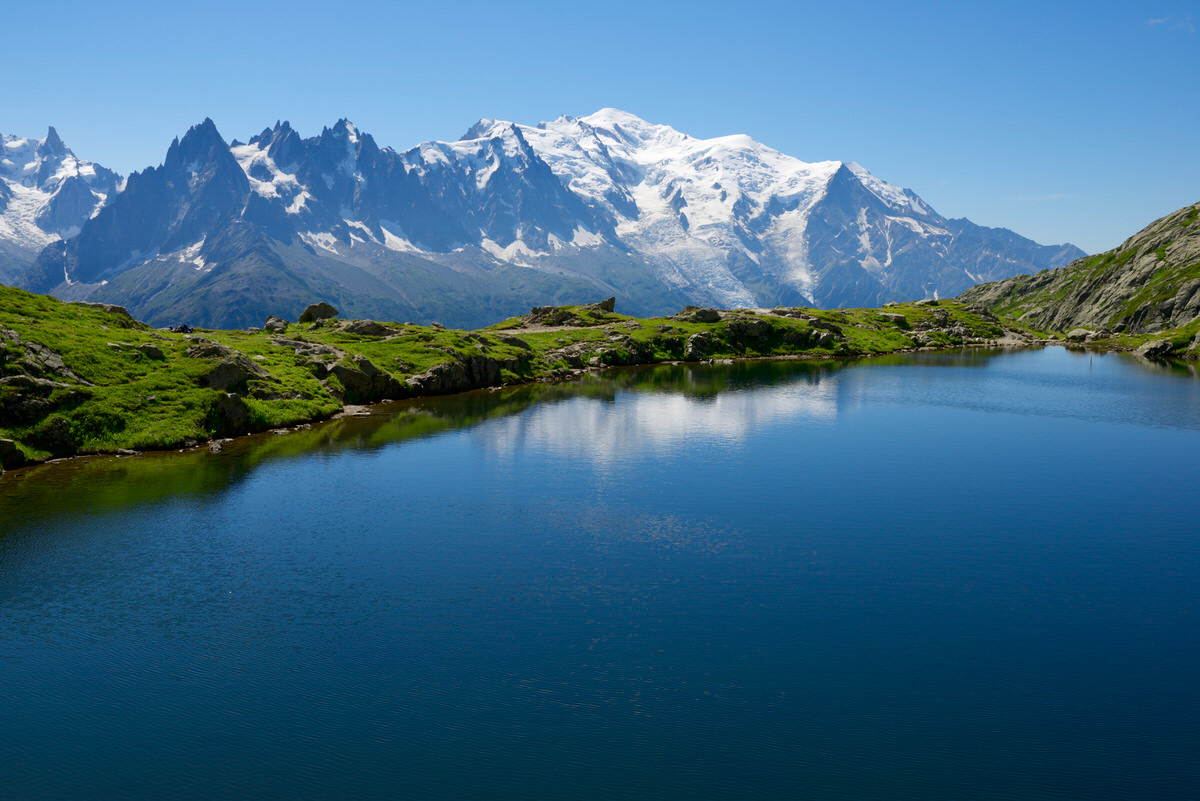What is the Eagle's Nest?
The Eagle's Nest owes its name to its location on a rocky ledge that looks like a nest, with a breathtaking view of the Chamonix Valley and the surrounding peaks. Historically, it was set up as a resting and stopping place for travelers climbing Mont-Blanc from the Chamonix Valley. The Cog railway, inaugurated in 1913, made it easier to access this previously isolated site.
The Eagle's Nest marks the end of the famous Mont-Blanc Train, attracting tourists of all nationalities and serving as a starting point for mountaineers setting off for Mont-Blanc. It offers visitors an unforgettable experience in the heart of French Alps, with its spectacular panoramic views, picturesque hiking trails and access to the network of mountain huts. Whether by the Mont-Blanc Tramway or on foot through the trails, every visitor can discover the beauty and majesty of Mont-Blanc in a unique and enriching way.
An exceptional panorama over the Chamonix-Mont-Blanc valley
From the Eagle's Nest, visitors can admire an exceptional panorama of the Chamonix Valley and the surrounding peaks. On a clear day, Mont Blanc, the highest peak in Western Europe, rises majestically on the horizon. This breathtaking view rewards hikers and travelers after climbing through the Alpine landscapes.
For many, Eagle's Nest marks the start of an epic adventure: The ascent of Mont-Blanc. From there, seasoned mountaineers begin their journey to the glacial heights of the roof of Europe. Access to the Eagle's Nest via the Mont-Blanc Tramway offers a comfortable and panoramic way to start this mythical ascent, allowing mountain enthusiasts to immerse themselves in the Alpine atmosphere from the very first steps.
The Mont-Blanc Tramway, connecting Saint-Gervais-les-Bains-Le Fayet to the Eagle's Nest, is an attraction in itself. For many travelers, the train ride to Eagle's Nest is a memorable experience in itself, a gradual immersion in the Alpine landscape before engaging in more daring mountain adventures.
How do I get to the Mont-Blanc Eagle's Nest refuge?
Mont-Blanc Tramway
The Mont-Blanc Tramway is not only a practical method but also a picturesque experience to reach the Eagle's Nest from Saint-Gervais-les-Bains-Le Fayet station. This cog railway, one of the oldest in France, takes passengers through a spectacular Alpine landscape for approximately 55 minutes. The trip starts with an ascent through dense forests where waterfalls trickle down the rock faces. Then, the train opens with green meadows dotted with alpine flowers, offering impressive panoramic views of the surrounding peaks. The trip culminates in Eagle's Nest, where passengers can disembark to take in the breathtaking views and begin further hiking adventures.
Hiking
For hiking enthusiasts and nature lovers, the option of Reach the Eagle's Nest on foot from the Chamonix Valley is an incomparable adventure. Several marked trails wind through the Are mountain pastures and offer close-up views of the Bionnassay glacier and the Needle of the same name. This approach requires good physical condition and adequate preparation due to the significant difference in altitude and the variable weather conditions in the mountains. However, every step is rewarded with breathtaking panoramas and total immersion in the Alpine environment.
What to do once you get to the top?
By choosing one of these methods to reach the Eagle's Nest, visitors can experience the natural splendor of Mont-Blanc from a variety of perspectives, whether by relishing the nostalgic comfort of the Mont-Blanc Tramway or by soaking up the grandeur of the Alps on foot, step by step.
Once in Eagle's Nest, visitors can enjoy a number of activities and attractions. The main attraction of the Eagle's Nest is the breathtaking view of the surrounding peaks, including the Mont-Blanc Massif itself on a clear day. It's a great place to take memorable panoramic photos.
In addition to serving as a starting point for climbing Mont-Blanc, the Eagle's Nest is surrounded by picturesque hiking trails. These trails allow visitors to discover the green mountain pastures of the Are and to approach the majestic Bionnassay glacier, with its sparkling crevices and its icy panoramas. The hike to Eagle's Nest, although moderate for the most part, offers some technical passages such as metal ladders and handrails to ensure the safety of hikers along the way.
The region around the Eagle's Nest is home to a rich alpine biodiversity. The lucky ones can see ibex perched on the steep rocks, groundhogs venturing into the green meadows, and a variety of alpine plants that blossom under the summer sun. These moments of observation of nature offer a unique perspective on the wildlife of the high mountains and complete the immersive experience of the Eagle's Nest.
In addition to its natural beauty, the Eagle's Nest is steeped in mountain history and culture. Information panels along the trails and at the Eagle's Nest Station tell the geological history of the region, the impact of Alpine tourism on the local economy, and the stories of the first mountaineers who explored these rugged peaks. These elements add an educational dimension to the experience, allowing visitors to better understand the challenges and triumphs associated with exploring the high mountains.
Some practical tips for visitors
Mountain weather conditions can change rapidly. It is essential to learn about weather forecast before leaving and equipping yourself accordingly, even in summer.
Also, the Hike to Eagle's Nest, although accessible to most hikers in good physical condition, requires sturdy hiking boots, clothing adapted to alpine conditions, and adequate hydration. Aspiring mountaineers considering climbing Mont-Blanc should also prepare themselves mentally and physically for the changing altitude and weather conditions in the mountains.
As protected natural site, it is crucial to respect local rules and to minimize its impact on the environment. This includes managing waste, respecting marked trails, and being aware of interactions with local wildlife.




